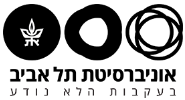16.7.15
Mr. Shay Elmalem
M.Sc. student of Prof. Emanuel Marom
Electrical Engineering, Physical Electronics Department
Athermalized Infrared Imaging as well as Visible Light Imaging with Extended Depth of Field using Composite Phase Masks
Thursday, July 16 2015, at 15:00
Room 011, Kitot building
You are invited to attend a lecture
By:
Mr. Shay Elmalem
M.Sc. student of Prof. Emanuel Marom
Electrical Engineering, Physical Electronics Department
Athermalized Infrared Imaging as well as Visible Light Imaging with Extended Depth of Field using Composite Phase Masks
Infra-Red (IR) imaging became quite popular in recent years. Until the beginning of the 21st century, only expensive IR imaging systems were common, mainly for military applications. In the last decade, IR imaging systems became very wide spread for industrial and civilian applications. Due to such growing market, the need to develop techniques for producing inexpensive IR imaging systems became much more prominent.
One of the most popular materials for IR lenses is Germanium (Ge), due to many attributes. However, Ge has a very unique drawback, due to the sensitivity of its refractive index with the temperature (which is 100 times higher than that of glass). This change in refractive index due to temperature results in a temperature-dependent focal length. Many approaches have been developed to solve the thermal focal shift (TFS), known as 'IR Lens Athermalization', so that the use of Ge as an optical material would be viable. All of the known approaches solve the TFS by complex optical design or by using post-processing algorithms. We present a way to treat the TFS as a Depth of Field (DOF) problem, and as such to solve it by using an all-optical DOF phase mask. The DOF mask is made of composite structure, designed to provide improved imaging performance for broad wavelength band along with wide temperature range. Some of the solutions developed can fit also for imaging system working in the visible band of the spectrum which require extended depth of field (with regards to broad wavelengths band only, since thermal effects practically don’t exist in this band). Simulation results will be presented and discussed.
Thursday, July 16 2015, at 15:00
Room 011, Kitot building

